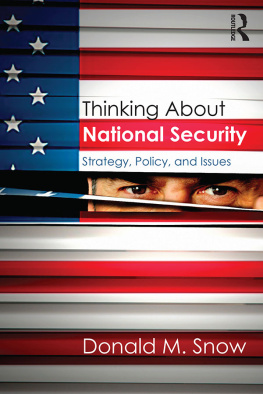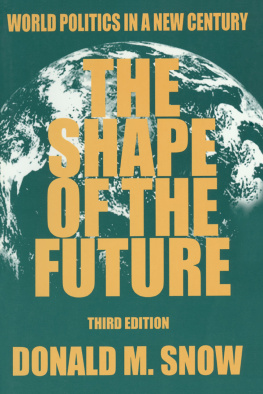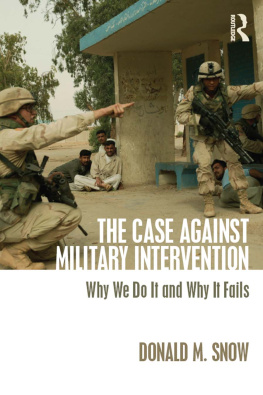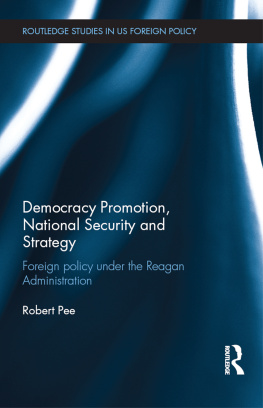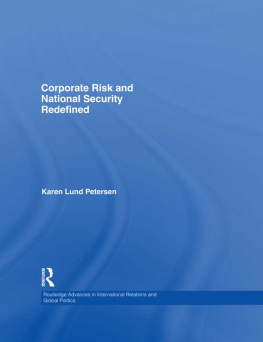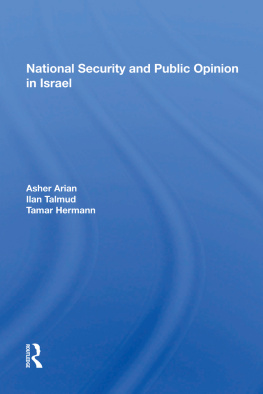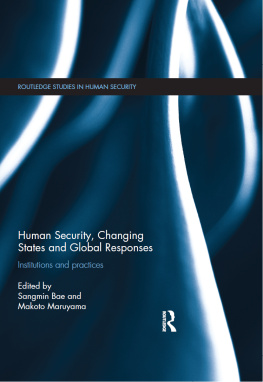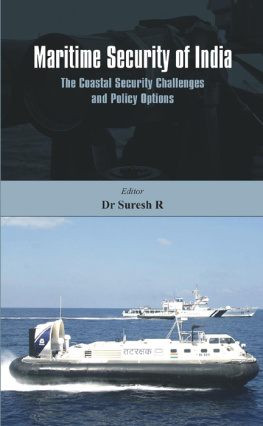Thinking About National Security
Perhaps the most basic national security question that U.S. leaders and the body politic continuously face is where and under what circumstances to consider and in some cases resort to the use of armed force to ensure the countrys safety and well-being. The question is perpetualbut the answer is not. This insightful text helps students make sense of the ever-changing environment and factors that influence disagreement over national security risks and policy in the United States.
The book takes shape through a focus on three considerations: strategy, policy, and issues. Snow explains the range of plans of action that are possible and resources available for achieving national security goals, as well as the courses of action for achieving those goals in the context of a broad range of security problems that must be dealt with. However, there is little agreement among policymakers on exactly what is the nature of the threats that the country faces. Snow helps readers frame the debate by suggesting some of the prior influences on risk-assessment, some of the current influences on national security debates, and suggestions for how future strategy and policy may be shaped.
Donald M. Snow is professor emeritus of political science at the University of Alabama, where he specialized in international relations, national security, and foreign policy. He has also served as visiting professor at the U.S. Air, Army, and Naval War Colleges and the U.S. Air Command and Staff College.
Thinking About National Security
Strategy, policy, and issues
Donald M. Snow
First published 2016
by Routledge
711 Third Avenue, New York, NY 10017
and by Routledge
2 Park Square, Milton Park, Abingdon, Oxon OX14 4RN
Routledge is an imprint of the Taylor & Francis Group, an informa business
2016 Taylor & Francis
The right of Donald M. Snow to be identified as author of this work has been asserted by him in accordance with sections 77 and 78 of the Copyright, Designs and Patents Act 1988.
All rights reserved. No part of this book may be reprinted or reproduced or utilized in any form or by any electronic, mechanical, or other means, now known or hereafter invented, including photocopying and recording, or in any information storage or retrieval system, without permission in writing from the publishers.
Trademark notice: Product or corporate names may be trademarks or registered trademarks, and are used only for identification and explanation without intent to infringe.
Library of Congress Cataloging in Publication Data
A catalog record for this book has been requested
ISBN: 978-1-138-90291-6 (hbk)
ISBN: 978-1-138-90292-3 (pbk)
ISBN: 978-1-315-69722-2 (ebk)
Where We Are Now
The major national security question that always faces the country is where and under what circumstances the United States must consider and in some cases resort to the use of armed force to ensure its safety and well-being. It is arguably the most basic question with which any national government deals: it is not clear what good a government is that cannot protect its people from harm, ultimately death. It is also a perpetual question: the problem of national security never goes away.
The answer to the question, however, changes with time and circumstance. Sometimes the answer seems obvious and clear enough to virtually everyone that there is essential agreement both on what the problems (usually expressed as threats) are and what must be done about them. Such situations, however, occur relatively rarely and are generally limited to times of great and obvious peril. The declaration of war on the United States by Germany and Japan in 1941 and the recognition of the existential threat that Soviet nuclear-tipped rockets highlighted during the Cuban missile crisis of 1962 and afterward are examples of extraordinary circumstances that produced a virtual unanimity of purpose around the dictates of national security.
Most of the time, such consensus does not exist, and the result is some level of disagreement within the body politic and among political leaders about the answer to the national security question. Normally, those periods are associated with less compelling, more unambiguous threats to the national existence and appropriate responses to them. In simplest terms, that is the condition in which the United States finds itself today. The most basic fact of the matter is that although the national security question may be perpetual, the answer is not: it is a variable that changes as the environment becomes different.
Introducing some of the factors that influence the current disagreement over national security policy and the possible range of solutions in the current environment are the purposes of this volume. It approaches this task through several lenses suggested in the title. Part of its framework derives from the question of U.S. national security strategy. This broadly used term has its genesis in military affairs (the basis of the word strategy comes from the Greek word for generalship), but it has been appropriated by numerous other disciplines, notably business. As used here, the term refers to the broadest level of application, sometimes called grand national strategy (see Dennis M. Drew and Donald M. Snow, Making 21st Century Strategy) and refers to a plan of action for achieving goals and resources for particular goals, in this case national security.
A closely related concept is policy, defined here as a course of action adopted or proposed by a government to achieve strategically determined goals. Policies implement strategy by providing direction and substance to responses to strategic plans and especially challenges to them. These challenges normally come in the form of threats to interests the state has that are expressed in grand strategy. The results are policy issues, problems with multiple policy alternatives, among which national security concerns must be reconciled.
This process of translating strategy to policy applied to issues is relatively straightforward when there is broad agreement about the nature of the threat the country faces. World War II strategy and policies were directed at defeating fascism. The only major issue was in what order the major fascist states should be dispatched. Similarly, the Cold War focused on containing communism. There was consensus on these needs, and the result was widespread agreement on the general orientation (or paradigm) for dealing with it. With the partial exception of terrorism, there is no current overarching threat to provide such unity and thus direction for strategy, policy, and issue responses. The search for a new, options-clarifying paradigm is also part of the task of this volume.
One useful way to think about national security problems in need of solution is captured in the concept of risk. A common dictionary definition of risk is the chance of harm or loss. Synonyms include hazard, peril, and jeopardy. So stated, the concept seems comparatively benign, because it does not include any assessment of the extent or gravity of risks one might encounter. In some cases, risks are minor and tolerable. There is some risk of getting a paper cut from turning the pages in this book, for instance, but neither the chance of this happening nor the consequences are particularly severe.
National security risks, on the other hand, can both be grave and have enormous potential consequences, and are thus of a different order of magnitude and concern. The possibility of national extinction as a result of an all-out Soviet nuclear attack against the United States was a grave and alarming risk to the American public brought home in 1962 during the Cuban missile crisis, and the brief confrontation between Russia and the United States in May 2014 over Russian actions in Ukraine was a reminder that this potential peril was still at least a distant possibility. A major difference between national security and other forms of risk is in the potential consequences.

